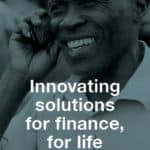The Great Equalizer: How Artificial Intelligence Can Make Heart Health Care More Accessible
In working to improve heart health care diagnosis, Cardiotrack came across an unsettling statistic – almost 43 percent of a test group that had recently gone through cardiac tests showed an abnormality in their ECG scans. It was one of those moments when you could almost hear a pin drop, as we realized how large the cardiovascular problem is and how the fight to rein it in needs to be powered up.
Deaths caused by CVDs still top the global list. The conventional way of dealing with the issue continues to be the most prevalent method, i.e. get a heart health checkup done regularly. And keep cholesterol and blood pressure under control. Yet heart attacks continue to strike randomly. It is a problem both of the rich and the poor around the world. Clearly, the way forward is innovation in health care. And so began the Cardiotrack journey.
After starting life as a three-lead ECG machine, Cardiotrack’s current avatar is a complete cardiac care platform. The journey has been full of learning, understanding what problems need immediate solving and going a little beyond that. The latter has led the Cardiotrack team to explore artificial intelligence (AI), because only with AI can an accurate, very quick diagnosis be made.
Cardiotrack is working closely with Paris-based Cardiologs, which has tested its AI accuracy on half a million ECG scans. There’s a gap of less than 15 minutes between diagnosis and interpretation when AI analytics is used at the primary health care facility; this process used to take about two to three days.
Today the company is on an even more ambitious path by asking, Is it possible to predict a heart attack? Can it be forestalled? Studies show that with enough accurate data, the answer to both questions is yes. Advances in data mining, AI and machine learning now make it possible to search and analyze vast amounts of data in a matter of seconds.
Intrinsic to heart health diagnosis are factors such as affordability and accessibility, which loosely translates to “if the diagnosis is not done on time and is not affordable then it is of no use.” This is the simple truth that has propelled innovations in heart health care. In poor countries like India, heart attacks and strokes over decades have orphaned entire families, primarily in semi-urban and rural areas. It was generally assumed that heart health care was something only the well-off could afford.
AI in cardiac care is the great equalizer. It has saved cardiologists’ valuable time by making an accurate diagnosis in a matter of seconds and making it available to both the physician and the patient. The result is twofold: the patient leaves with a complete picture of the state of her heart without any additional legwork or expense; and the physician has all the information needed to make an informed decision about the patient’s health.
The case for artificial intelligence in health care gets stronger every day. Neural networks, deep learning, machine learning, big data … these terms are thrown around more and more frequently. By outsourcing diagnosis to a computer program – the product of the best minds in the field – it’s possible for the typically overworked cardiologist to become a better cardiologist.
In a recent HealthTech article, the possibility of AI replacing doctors was discussed. While that possibility is still some years away, the fact is that this technology is already being used frequently for diagnosis and treatment.
How the technology works
The Cardiotrack m-Health platform combines Internet of Things (IoT) sensors with cloud-based storage and AI analytics. The platform allows primary care physicians to view the data captured by the IoT sensors, store patient records for easy retrieval and send the information for secure storage in the cloud. Plus, there’s an AI engine to analyze ECG signals and identify specific heart disease conditions.
- IoT sensors: These include a 12-lead ECG, blood pressure, pulse oximeter, blood glucose and cholesterol monitor.
- mHealth software: This is an Android-based micro-electronic medical records (EMR) application suitable for use at primary care clinics. Micro-EMR displays data captured by the IoT sensors maintains patients’ records and sends data to a cloud-based secure storage.
- AI analytics: AI analyzes the ECG signal and identifies close to 100 different heart health conditions. This interpretation is sent to the mHealth application and stored along with the patient’s record.
In practice, it works like this: A patient arrives at the primary care clinic to be diagnosed. The nurse/medical technician connects the ECG probes to the patient. The other end of the probe is attached to the IoT sensor which captures the ECG data and sends it via Bluetooth to the Android application. An ECG waveform is displayed on the Android device and the information is sent to the cloud server, where it is analyzed using the AI engine and the results of the engine are sent back to the physician. All this happens within about 10 minutes.
Through its use of AI to do a diagnosis, Cardiotrack is also proving to be a rich source of data on cardiac ailments. By regularly feeding in current data, it ensures that even the most insignificant cardiac abnormalities are mapped out accurately. Tests such as the one mentioned earlier can help government health care authorities chart a course which will ensure that a local population is diagnosed accurately.
Health care budgets in developing countries are severely frayed at the edges and a robust, efficient and affordable platform can make a significant difference.
What is a typical Cardiotrack clinic like?
The preferred location of deployment is at the primary care physician’s office or a primary care clinic, because this is usually the first point of contact with a patient and the most convenient place to do a diagnosis. The physician decides if the patient requires an intervention.
The Cardiotrack platform is paid for either by the cardiologist, the catheterization lab or the hospital which will use it, and this is where it can get tricky. Disruptive products and methods of treatment always run up against challenges and in the case of Cardiotrack, the most difficult one has been the long decision-making process involving purchases by hospitals. Happily for Cardiotrack, there have been some successes recently which show that both the cardiologists and catheterization labs have gotten return on investments in revenue as well as in terms of lives saved.
So, clearly artificial intelligence is no longer in science fiction territory. It has now moved into our lives, helping us to stay healthy conveniently and inexpensively. An immediate and accurate diagnosis can make a life-changing difference – one which can reverberate through generations.
Sumita Chakrabarty heads communication at Cardiotrack.
Photos courtesy of Cardiotrack
- Categories
- Health Care, Social Enterprise, Technology



